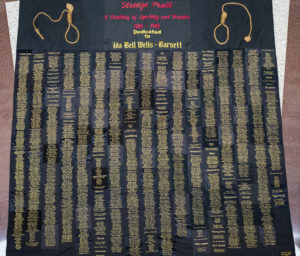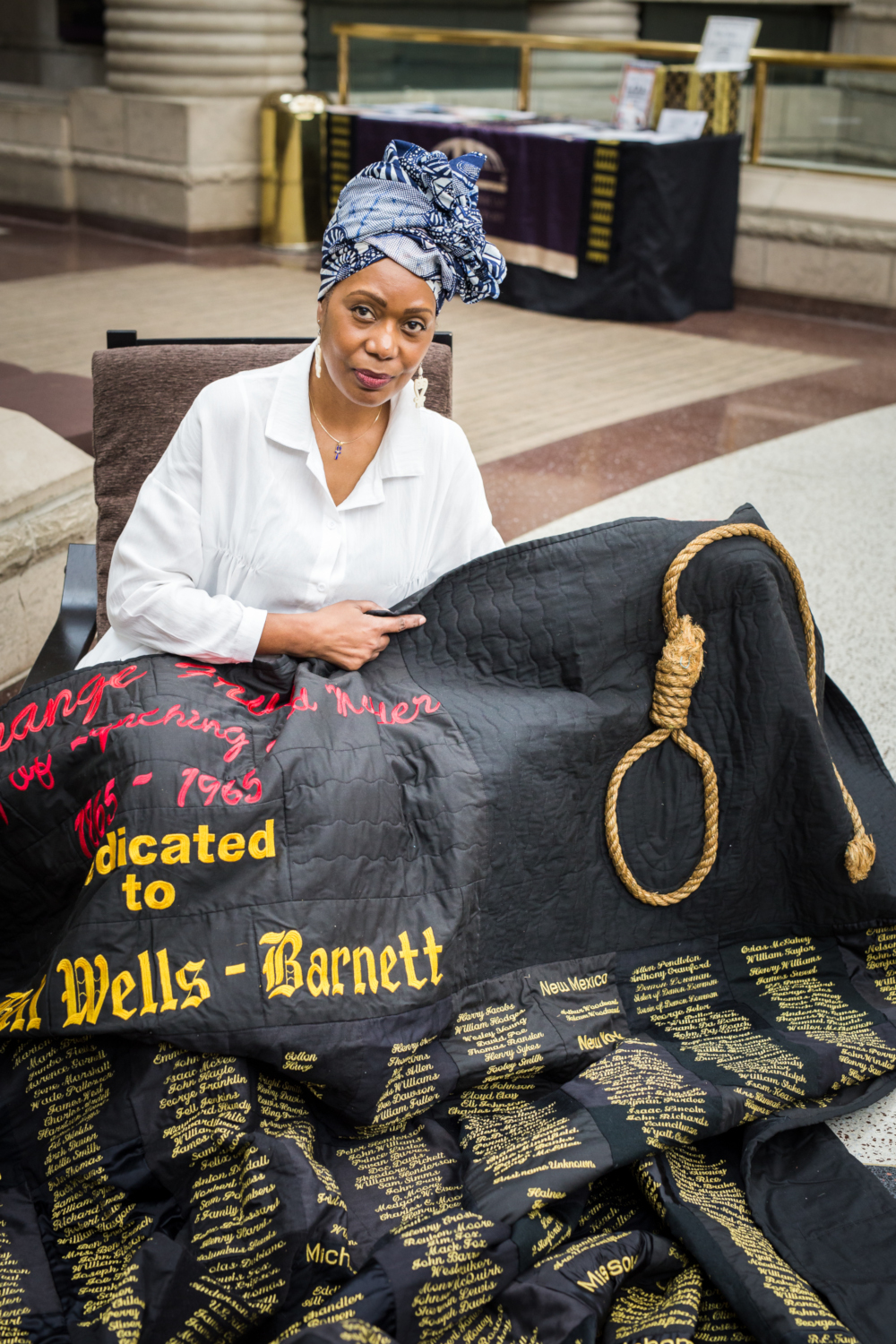The quilt, Strange Fruit, is named after a song by the late Billie Holiday, and it is dedicated to Ida Bell Wells-Barnett, an African American newspaper journalist and author born in 1862, who fought tirelessly for an anti-lynching law.
The story of my quilt began with an episode of the Oprah show. Her guest had written a book entitled The Face of Our Past, a book dedicated to African American women.
The book was filled with marvelous photos, depicting every aspect of the lives of Black women, but there was one picture that was horrifying. It was a postcard of a mother and her son who had been lynched side by side on a bridge. Until that moment, it had never occurred to me that women had been lynched. I later discovered that photos were often taken of people who had been lynched. These pictures were called postcards because that was what they were—just add a stamp, your comments to the back, and put it in the U.S. mail.
At the time that I saw these photos, my son was five years old. I thought, if an angry mob came after my boy what would I do? Who do you turn to for help when the whole town is coming after your child? For a brief moment, I was there with that mother. I heard her cry, “Please, don’t take my boy! Please, don’t kill my son!” I saw her cry, felt her pain. My heart began to ache. What crime had she committed? Loving her son too much?
Once in the safety of my car, with tears in my eyes, I began to pray, “Father God, someone needs to do something about this.” These people need to be known—if not their stories, at least their names. These were people, my people!
I believe the spirit of the Lord spoke to me: “Find their names and make a quilt.” My reply was “Father, I can’t.” I began telling God a
ll the reasons why I could not do the quilt: It would be too big; I’m not qualified; it would be too hard; and my all-time favorite excuse, Lord, you don’t really want to use me, pick someone else. Needless to say, He won, and I began to make the quilt.
Strange Fruit weighs 12 pounds, and it measures 10 by 10.6 feet. I used my embroidery sewing machine to embroider the names. The fabrics are various shades of black to symbolize the color of my people. Because I believe that everyone is precious in the eyes of God, I used gold thread to embroider the names. The textures represent the individual’s position in life, i.e., silk, cotton, and denim.
In making this quilt, I learned that an individual’s social status did not matter—Detective Albert Parker (lynched in 1868) or Reverend L. C. Baldwin (m

urdered in 1956). A person’s age did not matter: Virgil Ware, age 13 (murdered in 1963) or the three murdered children of Thomas Harris. Anyone could be lynched, anywhere, anytime.
I did this quilt in loving memory of my people, people I have never met, people whose names are woven not only into the fabric of the quilt, but also into the fabric of my heart.
In 2000, the gift of quilt making awakened April Shipp’s spirit and she became a fiber artist. She began creating quilts of spiritual, political and historical significance, which have been shown in museums, galleries, and universities across the United States, as well as in England and South Africa. Her works have also been featured in numerous catalogs, newspapers and magazines. She has participated in many projects to make historical quilts in the Detroit metro area, and is currently teaching the art of quilt making at the downtown campus of Wayne County Community College.


